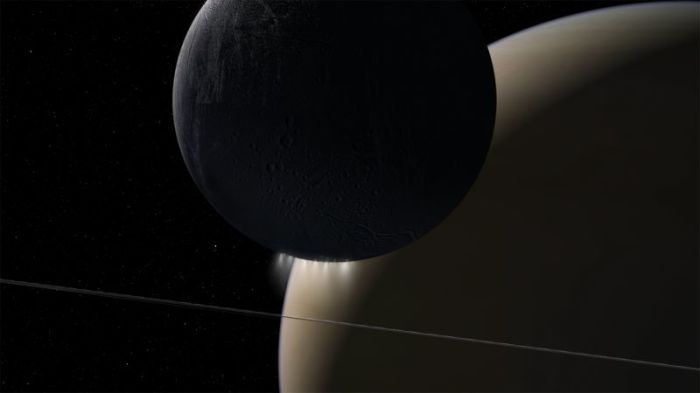Scientists Discover Saturn Communicates With One of Its Moons (Listen Here)

Scientists have discovered that a "surprisingly powerful and dynamic interaction" is taking place between Saturn, its rings, and one of its moons, known as Enceladus after studying information provided by the Cassini spacecraft.
Scientists observed that plasma waves traveling across magnetic field lines and the rings move to and from Saturn and Enceladus, one of the planet's smallest of 50 known moons.
The researchers then converted and compressed those waves into an audio file that could be audible to the human ear. The end result of the conversion process is an audio file that produces a kind of "whooshing sound."
NASA has said that the interaction between Saturn and its moon differs from how the Earth works with its own satellite because of the makeup of Enceladus itself.
Enceladus goes through Saturn's magnetic field and it's also "geologically active," according to scientists.
Beyond just the way that Enceladus interacts with Saturn, there are other reasons to be interested in the planet.
Earlier in its journey, the Cassini spacecraft was also able to detect "complex organic molecules" coming from Saturn's satellite. This discovery, scientists noted, has reinforced the notion that this specific moon of Saturn's could feature "conditions suitable for life."
The data that came from the since crashed Cassini also indicates that Enceladus could be home to molecules that are both larger and heavier than previously thought.
The discovery of those complex molecules is even more significant because they are difficult to find outside of Earth.
It's still unclear how those complex molecules ended up on Enceladus, though Frank Postberg from the University of Heidelberg, Germany, speculated that they could be the products of the hydrothermal activities taking place in Enceladus' core.
If Postberg is accurate, then it's possible that the molecules are originating from hydrothermal vents located at the moon's ocean floor, something that is also happening on Earth.
Another possibility is that the complex molecules came from materials found in some meteorites.
At this point, scientists are still trying to figure out if Enceladus could serve as an environment conducive to life.




























